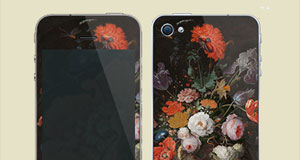…; collection Paul Praun (1548-1616), Nuremberg, first documented in his _Praunsche Kabinett_ in 1616;{Nuremberg, Stadtarchiv, Familienarchiv von Praun, E 28 II, no. 224, inventory _Praunsche Kabinett_ 1616, no. 362: _Ein Kopf, Johan Gregori conterfect, eines schuchs hoch_, see K. Achilles-Syndram, _Die Kunstsammlung des Paulus Praun: Die Inventare von 1616 und 1719_, Nuremberg 1994, p. 150, p. 147, no. 362. Not identifiable in the 1719 inventory of the _Praunsche Kabinett_ (Nuremberg, Stadtarchiv, Familienarchiv von Praun, E 28 II, no. 1477); possibly identical to C.T. von Murr, _Description du Cabinet de Monsieur Paul de Praun à Nuremberg_, Nuremberg 1797, no. 86 (disputed by Achilles-Syndram).} acquired (with the _Praunsche Kabinett_) by the dealers G. Buttner and J. F. Frauenholz (1758-1822) and the collector Hans Albrecht von Derschau (1754-1824), Nuremberg, 1801;{P.J. Lebrooy, _Michelangelo Models Formerly in the Paul von Praun Collection_, Vancouver 1972, pp. 31-32; R. Schoch, ‘‘Die kostbarste unter allen nürnbergischen Kunstkammern’: Glanz und Ende des Praunschen Kabinett’, in K. Löcher et al., _Kunst des Sammelns: Das Praunsche Kabinett, Meisterwerke von Dürer bis Carracci_, exh. cat. Nuremberg (Germanisches Nationalmuseum) 1994, pp. 25-34, esp. pp. 32-33; E. Luther, _Johann Friedrich Frauenholz (1758-1822): Kunsthändler und Verleger in Nürnberg_, Nuremberg 1988, pp. 74-75; F. Scholten, ‘Dusting off Terracottas: A Critical Reception History of Johan Gregor van der Schardt’s Artistic Legacy’, _Simiolus_ 41 (2019), no. 3, pp. 131-52, esp. p. 135.} acquired (with the _Praunsche Kabinett_) by the dealers G. Buttner and J.F. Frauenholz (1758-1822) and the collector Hans Albrecht von Derschau (1754-1824), Nuremberg, 1801; acquired by Anton Paul Heinlein (1715-1803), Nuremberg, by 1803;{F. Scholten, ‘Dusting off Terracottas: A Critical Reception History of Johan Gregor van der Schardt’s Artistic Legacy’, _Simiolus_ 41 (2019), no. 3, pp. 131-52, esp. p. 136 and note 39.} from his sale, Nuremberg (Johann Andreas Boerner), 9 April 1832, no. 296, acquired by _Oberstleutnant_ Karl Emil von Gemming (1794-1880), Nuremberg;{P.J. Lebrooy (_Michelangelo Models Formerly in the Paul von Praun Collection_, Vancouver 1972, p. 33) posited that Von Gemming acquired the entire collection of terracotta models of the _Praunsche Kabinett_ directly from Buttner and Frauenholz in 1803. Von Gemming was a dealer (_Antiquar_), numismatist, fossil collector and more. The fossil of a prehistoric bird (Rhamphorhynchus gemmingi) originating from Von Gemming’s collection is today preserved in the Teylers Museum, Haarlem.} ? from whom, acquired by the sculptor Ernst Julius Haehnel (1811-1891), Dresden, 1842;{Presumably Van der Schardt’s _Self-Portrait_ was one of the 33 terracottas - all of which originated from the _Praunsche Kabinett_ - Haehnel had purchased at the sale of the Karl Emil von Gemming collection, see P.J. Lebrooy, _Michelangelo Models Formerly in the Paul von Praun Collection_, Vancouver 1972, p. 33.} ? his widow Elise Walter-Haehnel or their daughters Anna and Elisabeth Haehnel, Dresden, 1891;{P.J. Lebrooy, _Michelangelo Models Formerly in the Paul von Praun Collection_, Vancouver 1972, pp. 34-35.} …; from the London art market, acquired by Michael Hall, New York, 1980; from whom, $1,400,000, to the museum, with the support of the Mondriaan Stichting, the SponsorBingo Loterij and the Vereniging Rembrandt, with additional funding from the Prins Bernhard Cultuurfonds, 2009{For the circuitous acquisition history, see F. Scholten, ‘Johan Gregor van der Schardt, Zelfportret: Een nipte verwerving’, in A. de Vries and F. Bijl de Vroe-Verloop (eds.), _Vereniging Rembrandt, verrijkend & verreikend_, The Hague 2009, pp. 15-18.}
Bibliography and list of abbreviations for the provenance (pdf)


